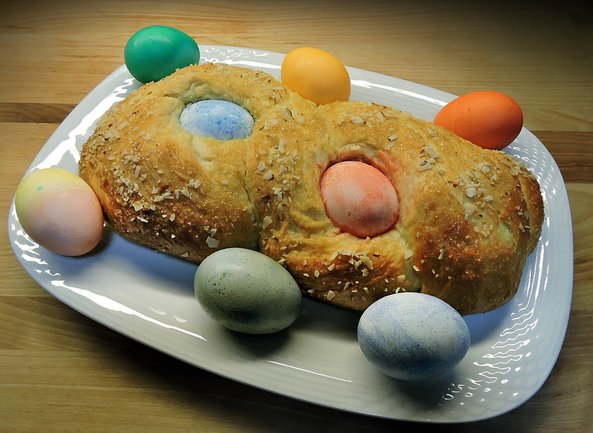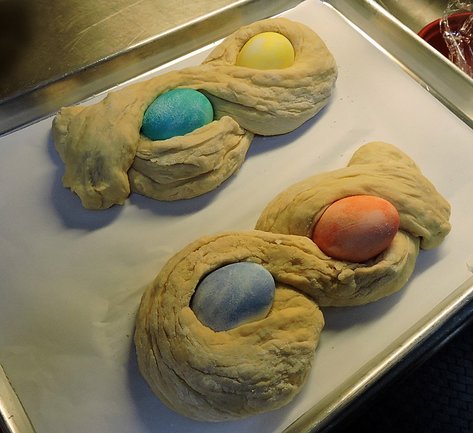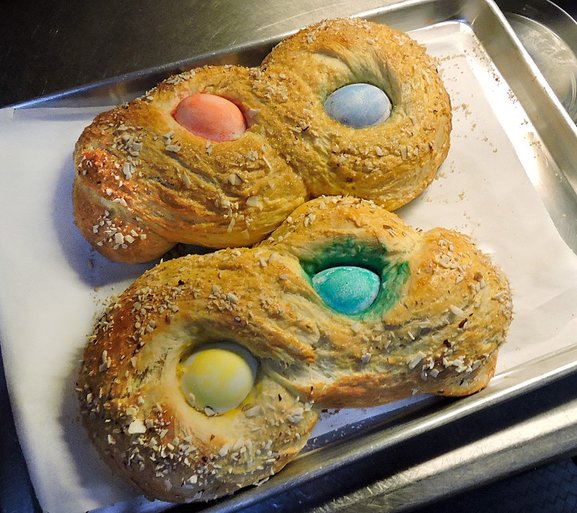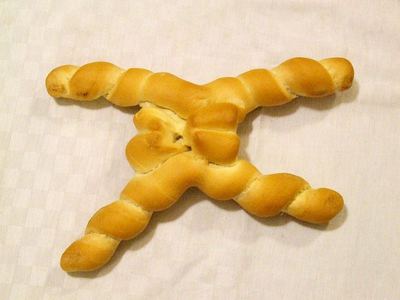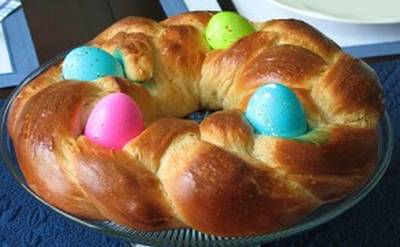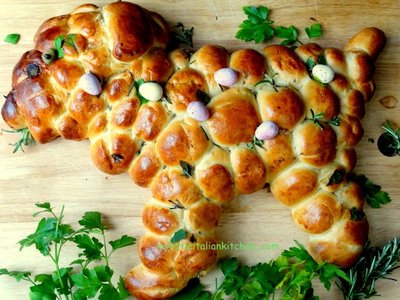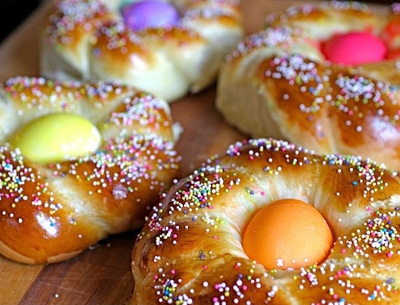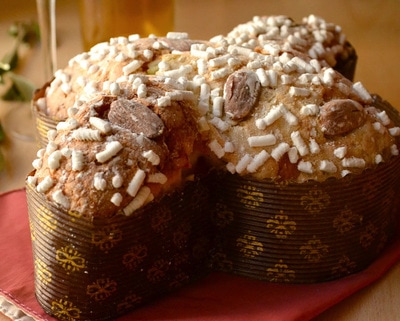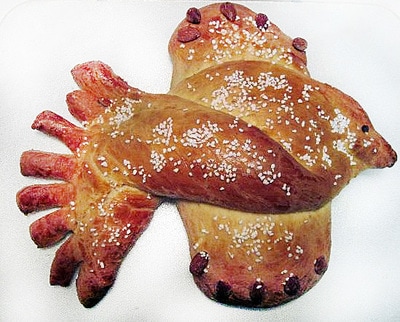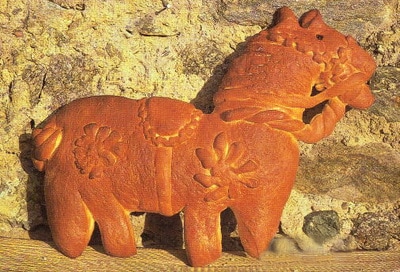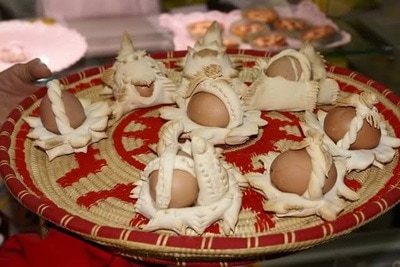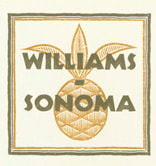|
There's nothing like making a Pane di Pasqua for Easter. This is a traditional holiday egg bread that usually contains hard boiled eggs--baked right into the bread. It can be eaten as a snack with honey or jam, served with a meal or given as gifts when visiting family. Variations of Easter celebration breads are made throughout Italy. To celebrate Easter in Sicily, they make "baby-doll" breads for girls, and breads shaped like ducks, lambs and horses for boys. In most areas of Italy, there are Easter breads and mostly are sweet and contain whole, brightly dyed eggs which are braided into the bread, with the eggs cooking during the baking. In Lombardy there is the Colomba Pasquale (literally "Easter dove"), which has become popular throughout Italy. In Sardinia, the celebration breads get even more intricate, with scissor work on the dough adding amazing details in Easter egg baskets. The eggs can be brightly colored or natural. In the Greek tradition, the same sort of bread is made with eggs dyed red by using onion skins. The eggs represent birth, or rather, at Easter the re-birth. This recipe can make one round bread or two smaller straight braided breads, or 6 individual breads. Boiling and Dying the eggs: For perfect eggs:
You can dye 4-6 eggs, only after hard-boiling them. In the past, I've tried to use raw eggs placed directly in the dough, but they often are a bit under-cooked--not soft boiled, but a bit under. If you want to make real looking like partridge eggs, dye them a pale blue and then use a tooth brush with brown dye to put blotches and spots all over each egg. Proofing the Yeast: 1 tablespoon instant or active dry yeast. 1/3 cup milk (at 115 F) 1 tablespoon sugar
For the dough: 2 1/2 - 3 cups all-purpose flour (depends on humidity... don't put in all the flour if it doesn't need it, but if it's a rainy day or you're using jumbo eggs, you might need 4 cups). 1/2 cup warm milk (115 F) 1/4 cup orange juice (room temperature) 1/2 cup sugar 1 teaspoon salt 8 tablespoons butter (softened & cut into small pieces) 3 eggs well beaten (You can substitute Egg Beaters if you like). 1 teaspoon vanilla (or almond flavoring for a more Italian flavor) For egg wash and topping: 2 eggs beaten (egg wash for brushing) 2 tablespoons sliced almonds 2 tablespoons turbinado sugar colored sprinkles (optional) Directions
Forming the Bread
Here are some other variations on Pane di Pasqua... --Jerry Finzi
|
Archives
May 2024
Categories
All
|

